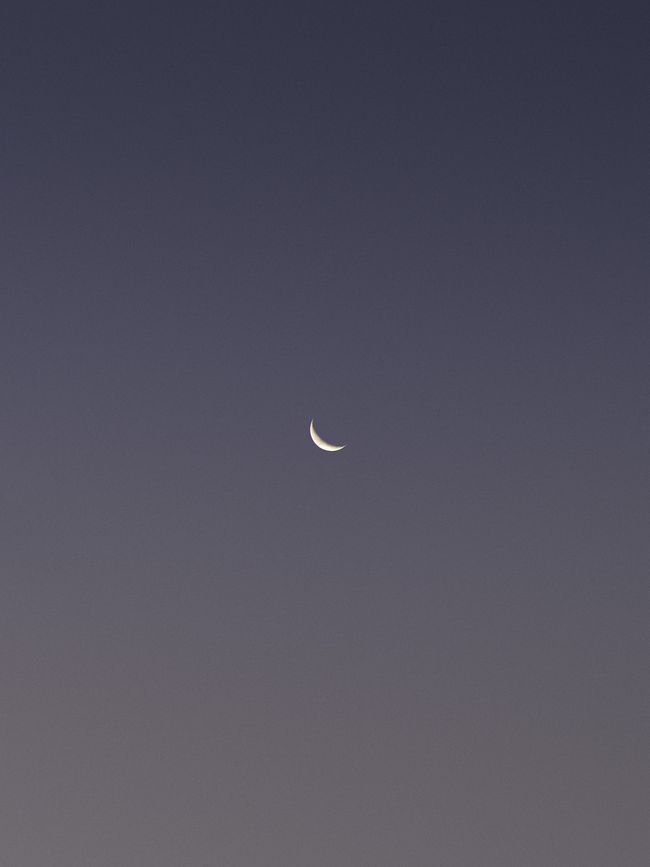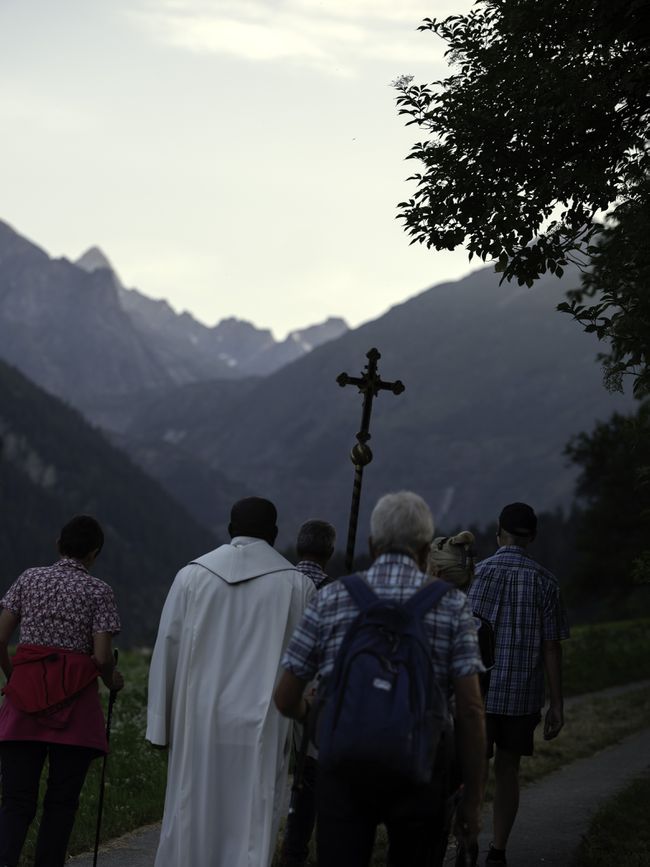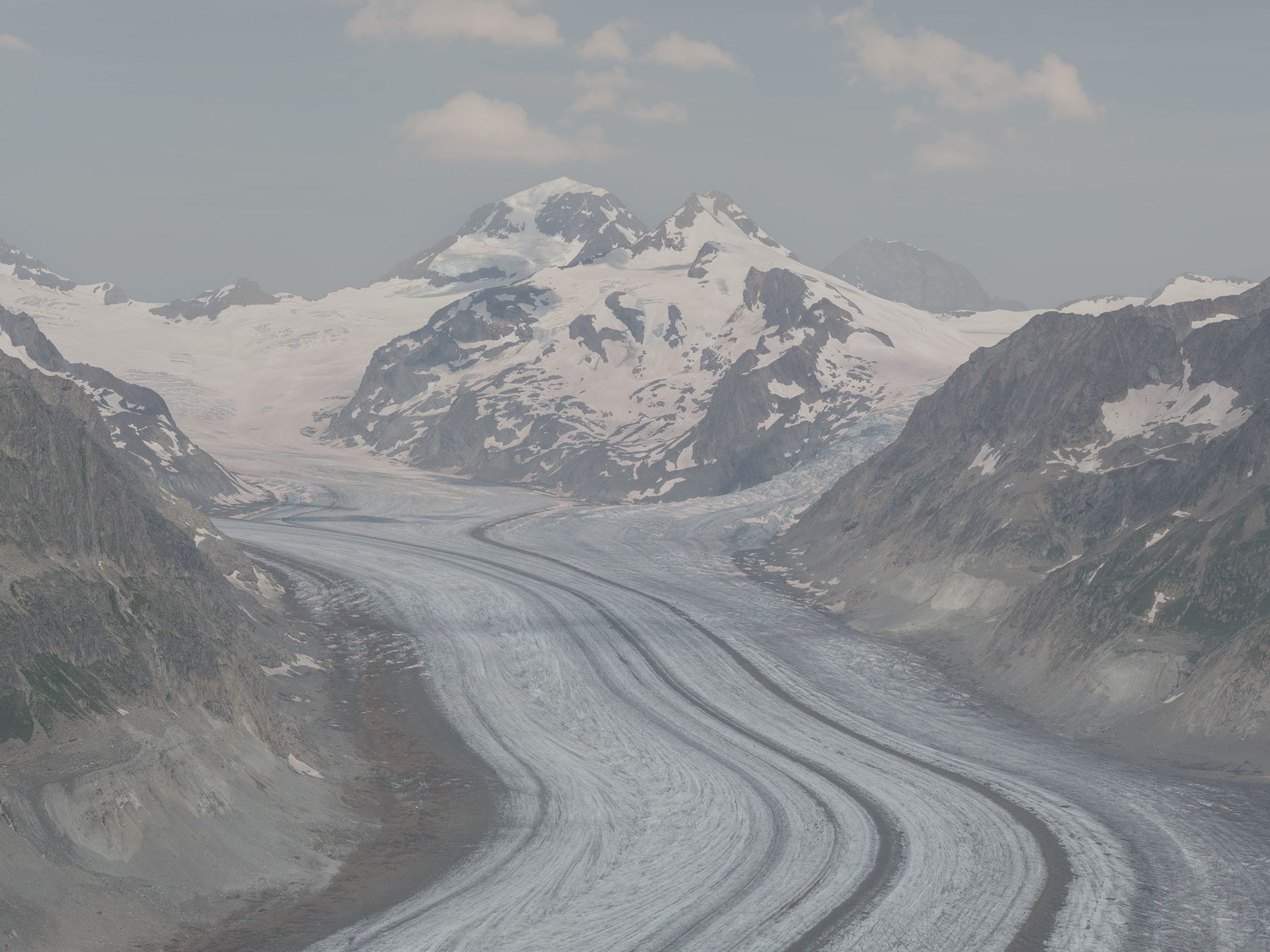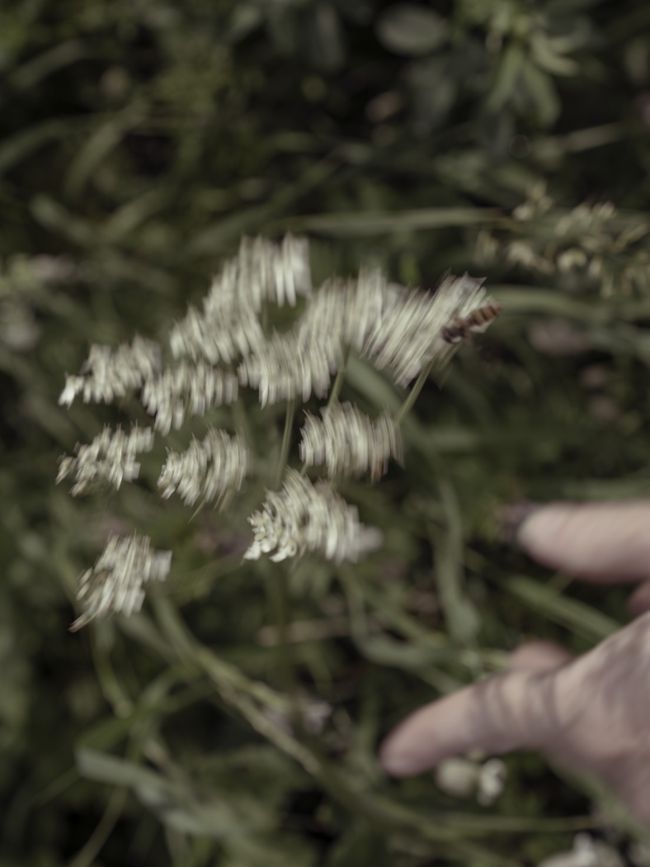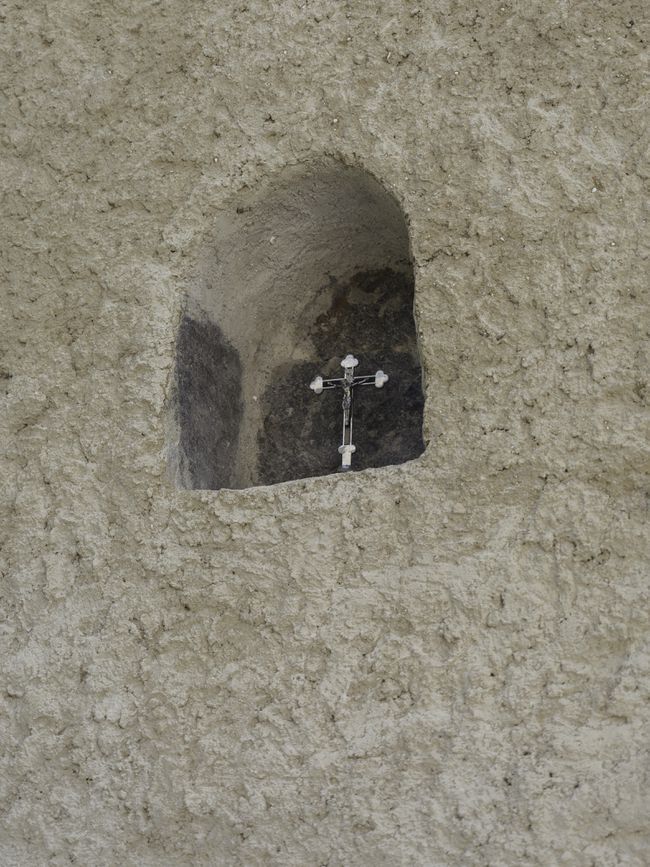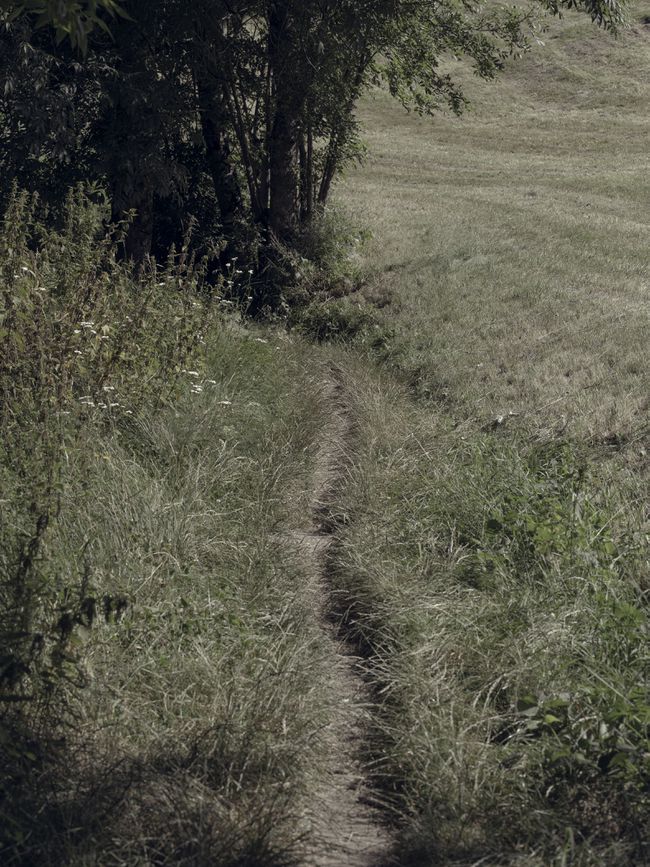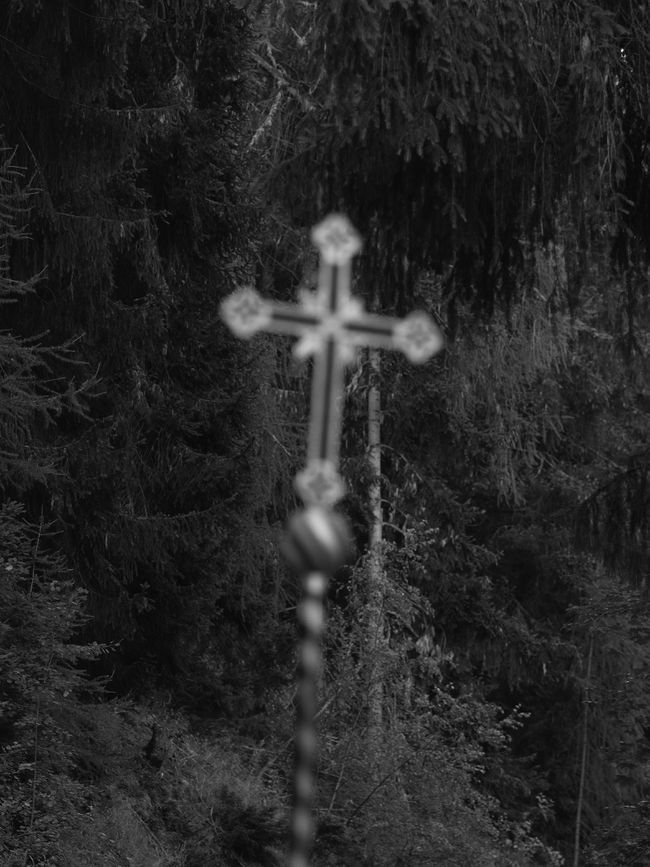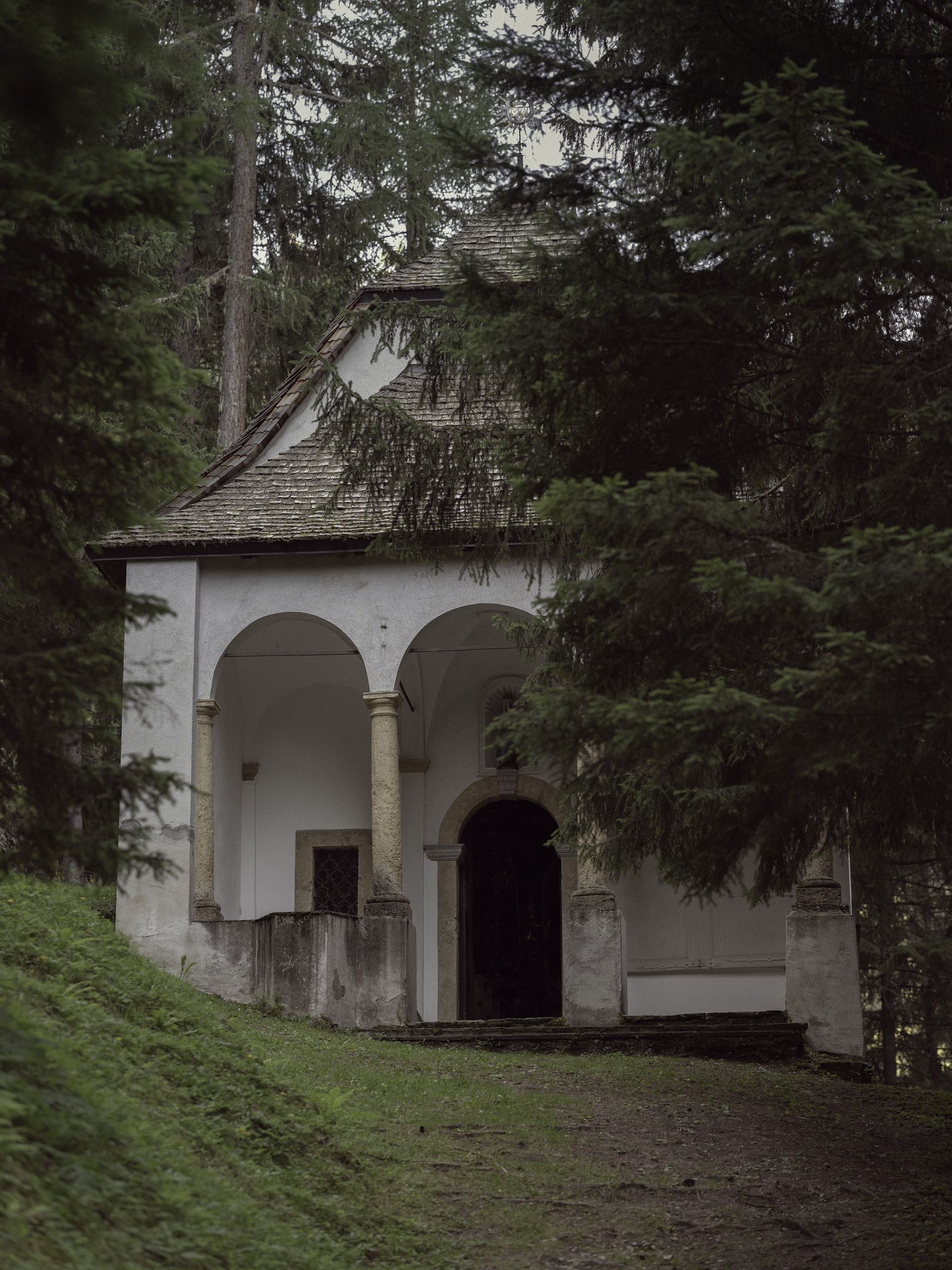Memory and Melt
Rebecca Wickham reflects on a procession for the Aletsch Glacier
We gathered outside the church in the centre of the village, as the moon was still in the sky, the stillness of the morning punctured only by the tolling of the bells. There were just a handful of us at the start, the devoted and the curious. As the light grew, the priest led us through the village, across a river, and into the forest, slowly weaving us up the mountainside in the footsteps of countless others before.
On 31 July 1674, the villagers of Fiesch, Switzerland began a yearly pilgrimage in response to the growing glacier that towered over their homes. In the midst of a period of global cooling, the Aletsch glacier continually swallowed their pastures, released floods and avalanches upon their village, and threatened their lives. In an effort to keep the glacier at bay, they asked Pope Innocent XI to grant them a pact with God, vowing to lead good lives in return for permission to petition God directly once a year, on the feast day of St. Ignatius of Loyola—31 July. This petition included three wishes: to be kept from harm, to be spared natural disasters, and to stop the glacier from growing. Once a year, as a form of penance, this procession of villagers walked up the mountain beside their village to the chapel of Maria Heimsuchung hidden deep in the woodland, sending their prayers up along the way. For 350 years, the townspeople have followed this same path through the forest, while the ice around their village has slowly retreated.
Today, the Aletsch Glacier has lost more than 1300 metres of ice, and its neighbours Fiescher and Oberaletsch over 1000 and 240 metres respectively. Two thirds of all glaciers worldwide are expected to melt before 2100; the timespan of a single human life. In 2009, the people of Fiesch successfully petitioned the Vatican to allow them to reverse the wording of their historic prayer, to ask instead for the glacier to return.
We picked mountain berries on our ascent. The cadenced clack of walking poles offered a baseline to the murmuring of prayers, a language that spoke, to me, in rhythm and tonality rather than words. A pair of deer leapt in synchrony through the trees beside us. The day would later warm to 32 degrees Celsius, in another record-breaking summer that alone reduced the volume of all Swiss glaciers by 2.5%.
Robert Macfarlane writes, “There is something obscene both to the ice and its meltings – to its vastness and vulnerability. The ice seems a ‘thing’ that is beyond our comprehension to know but within our capacity to destroy.”1 To touch the surface of a dying glacier, to cup its meltwater in your palm and feel its chill on your skin, is an experience that goes beyond statistics, beyond language. If our conception of the sublime is a violent dialectic of beauty and terror, then the act of witnessing the scale of these meltings is sublime indeed—something akin to a religious experience, or at least a sacred one.
When did we stop finding holiness in nature? How can we reclaim a relatedness to the Earth? Pope Francis, in his much-celebrated 2015 encyclical, spoke of the climate crisis as a moral problem: “The sickness evident in the soil, in the water, in the air and in all forms of life are symptoms that reflect the violence present in our hearts. We have forgotten that we ourselves are dust of the Earth; that we breathe her air and receive life from her waters.”2 Here, the natural and religious worlds are bound together—morality and ecology intertwined. Perhaps rediscovering the spiritual dimension of nature is the first step toward a new reciprocity with the Earth, one that will allow us to tread on her more mindfully. St Ignatius of Loyola, whom the Fiesch pilgrimage honours each year, was a worldly saint, a pilgrim who saw God in all things and considered the journey to be as important as the destination—the journey as part of the technique by which God is sought. The act of walking, of putting your feet down, one at a time, on the Earth, is a choice to be present, to surrender to place. It creates a bodily experience of space that imbues the landscape with meaning and memory. It evokes a ground-up awareness of our entanglement with the larger ecological whole. “When you give yourself to places,” Rebecca Solnit writes, “they give you yourself back.”3
-
Robert Macfarlane, Underland: A Deep Time Journey (Hamish Hamilton, 2019), 363. ↩
-
Pope Francis, “Laudato si’: Encyclical Letter of the Holy Father Francis on Care for Our Common Home,” May 2015, 3, https://www.vatican.va/content/dam/francesco/pdf/encyclicals/documents/papa-francesco_20150524_enciclica-laudato-si_en.pdf. ↩
-
Rebecca Solnit, Wanderlust: A History of Walking (Granta, 2014), 13. ↩
A glacier remembers, from months to millions of years, deep layers of memories that are melting in mere decades. Ice can wear down full mountain ranges but can also hold a body gently in its embrace for centuries and preserve delicate air bubbles for millennia. It can remember volcanic eruptions, forest fires, the temperature of the air 100,000 years ago. It records and tells the stories of the Earth, communicating across the abyss of deep time and reaching into both the future and the past. In this sense, glacial landscapes and religious rituals both act as holders of collective memory. And while the memories of the Earth are fading with the thawing ice, perhaps religious practices can help to keep this forgetting at bay, binding generations together through time and solidifying a sense of cultural identity. Memories can be forged through the act of re-inhabiting the past. The Fiesch procession is one that moves in synchronicity through the generations while the world around it changes, an anchor point amid continual flux.
The symbolism associated with local rituals, too, could prove more effective at mobilizing a response to the climate crisis than scientific data—we are sensory beings after all. Recent funerals for dead glaciers (Pizol in Switzerland, Okjökull in Iceland, and Clark in Oregon) attracted hundreds of grievers, and this very human ritual for nonhuman losses opens up a space for sustained remembrance. Rituals like these can help us to re-remember, against a climate of slow environmental amnesia.
The service was conducted outside the chapel, in a small grassy clearing, as we sat on the earth and listened to the choir sing. Intertwining with birdsong, it sounded joyful, hopeful. The prayers lingered in the air before being swallowed by the forest, and I closed my eyes and wondered if I could be back in 1674, watched by these same trees. I thought about those who had walked to this place before, back when the carbon dioxide level was at 280 parts per million rather than 424, and the glacier was a thing to be feared rather than missed. I wondered too, for how many more years this pilgrimage would endure, until the reason it began fades further and further from memory. I hoped that the glacier would not be forgotten, even if its traces disappear from the landscape.
